Teaching High-Frequency Words: 7 Free Poems
This post may contain affiliate links. As an Amazon affiliate, we earn from qualifying purchases.
Get 7 printable poems to teach and reinforce decoding skills while reading tons of high-frequency words. Through practice with these poems, kids can use research-based strategies to turn unknown high-frequency words into sight words that can be read automatically with ease!
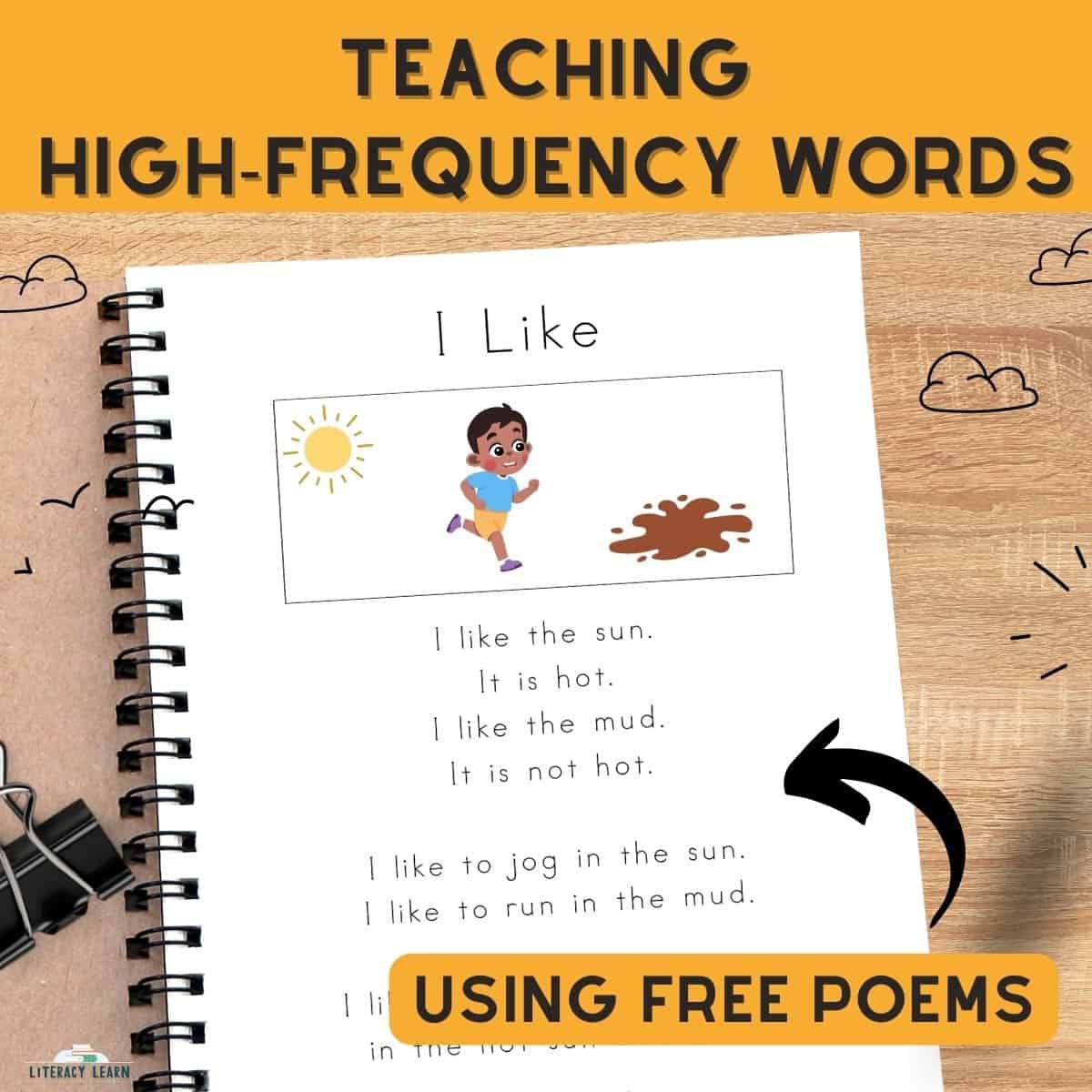
What Are High Frequency Words?
High frequency words (HFW) are words that readers see most often in text. The, is, we, come, jump, and down are all examples of High Frequency Words.
High frequency words have been compiled into lists, with the most popular two being the Dolch List and Fry List.
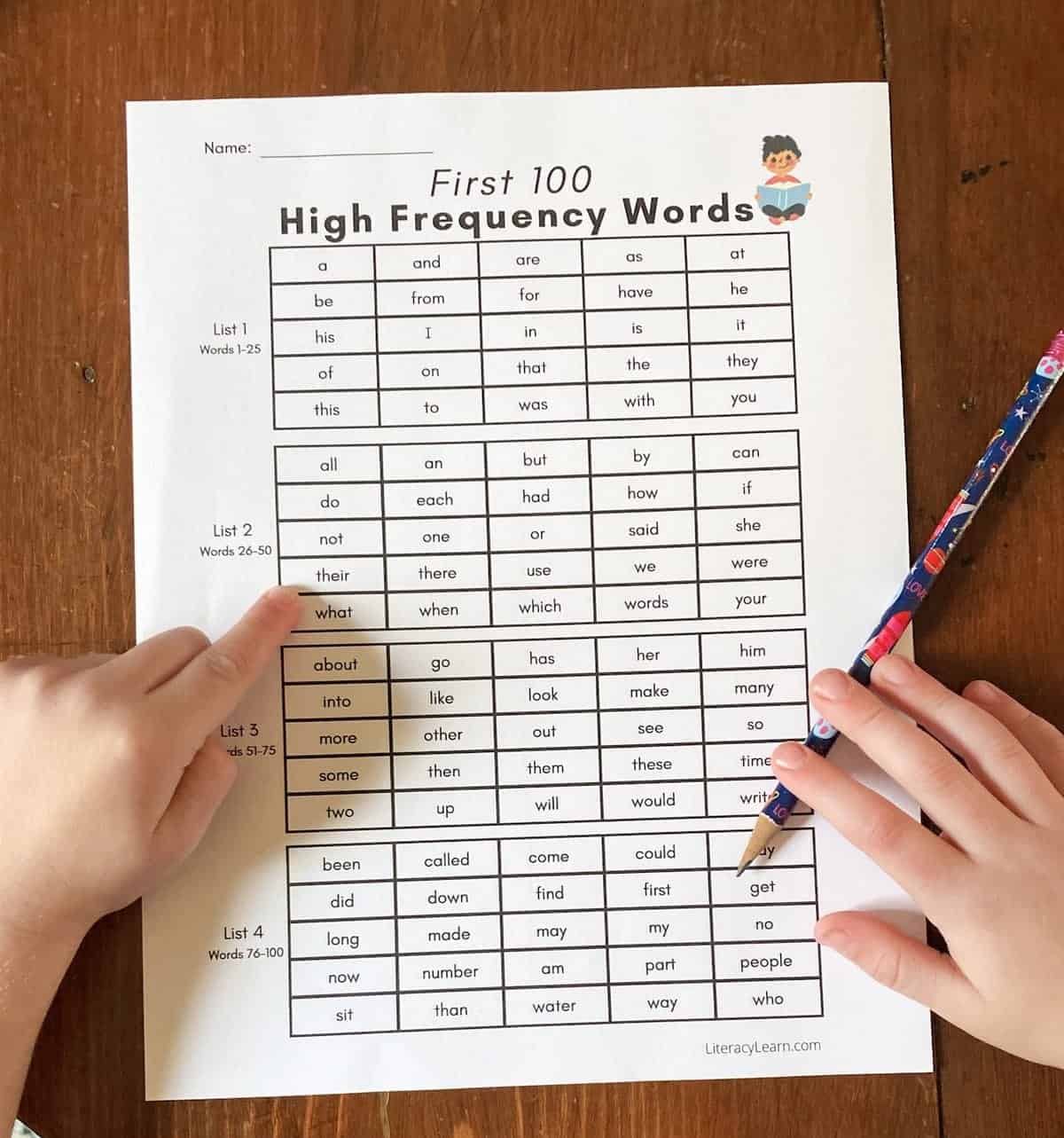
👉 High frequency words are different from sight words or irregular words. In the past, these terms have often been used interchangeably, but it’s important to use the terms correctly.
- High Frequency Words: The most commonly used words seen in print.
- Sight Words: The words a child knows instantly, by sight. Each child’s sight word bank will be different.
- Irregular Words: Words that include portions with irregular spelling patterns that cannot be decoded. These portions need to be memorized by heart.
💡 How the Brain Learns Words
In the past, teachers (myself included) would choose random words from the HFW list to teach. We’d put them on flashcards, send them home on rings, and display them on the smartboard to flash at our students.
We believed that repeated exposure to the whole word alone would help students eventually learn the words.
According to research, this method does work for about 40% of students who will learn to read regardless of the type of instruction they received.
But what about the other 60% of our students? This is where explicit, systematic, and direct instruction is necessary!
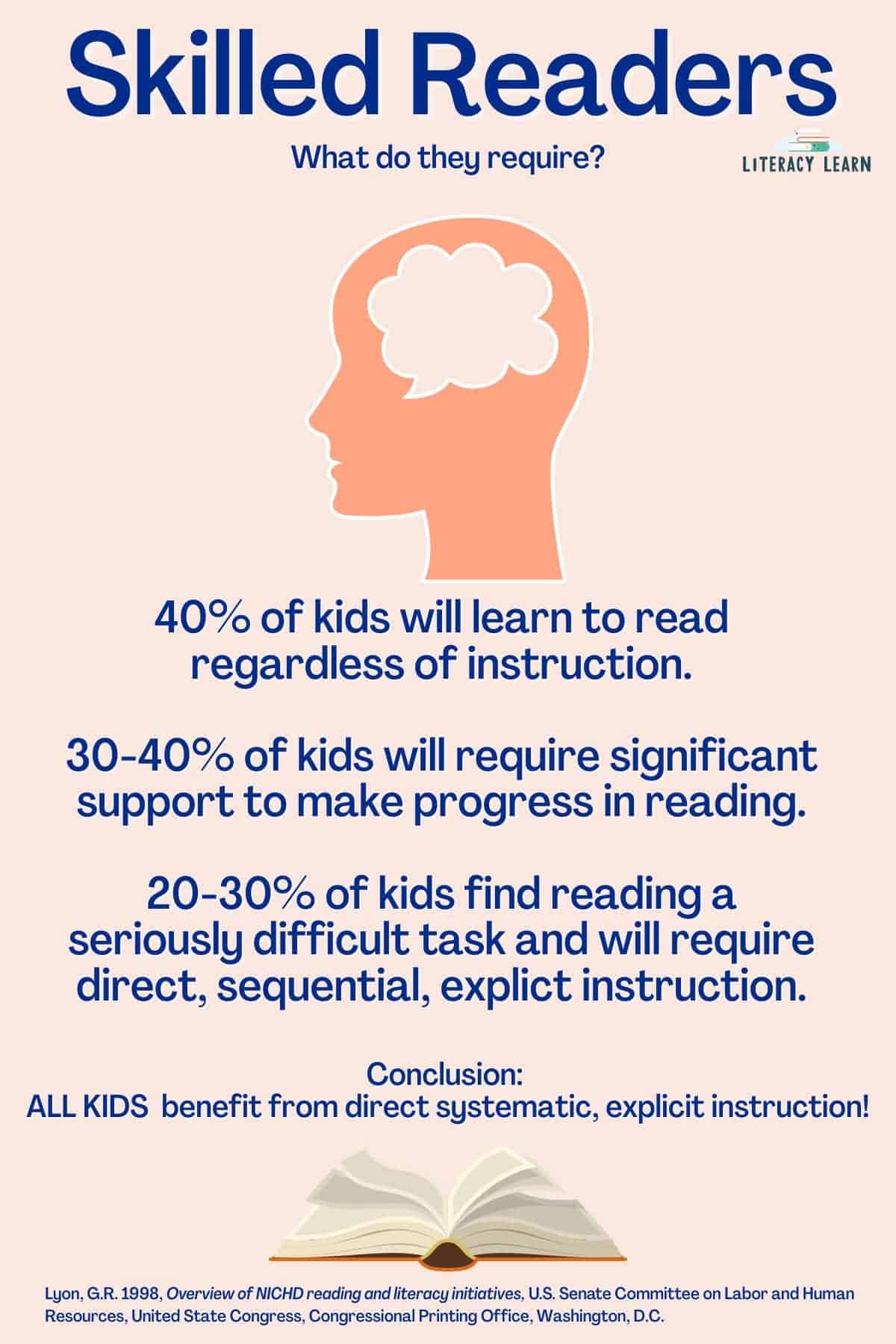
Through research, studies, science, and technology, we now know how the brain actually learns to store and retrieve words, and that is through the process of orthographic mapping. To read more about this and get FREE resources to promote this process, visit our post on orthographic mapping.
When you know better, you do better, so now teachers are pivoting their instructional practices to align with how skilled reading actually occurs.
The brain needs to make conscious connections between letters and sounds in a word in order to store and retrieve them easily. After these connections in the brain have been made multiple times, the words turn into automatic sight words.
That is why the process of decoding, where we connect phonemes to graphemes, is so important!
Teaching High Frequency Words
The great news is that the majority of high frequency words are totally decodable! This means we don’t have to explicitly teach most of the words on the Dolch List or Fry List!
Let’s look at the high frequency word: red. By late kindergarten and early first grade, students should have the appropriate knowledge of letters, sounds, and blending skills to decode the word. This means the teacher never has to explicitly teach this word.
However, some of high-frequency words cannot be decoded, or at least not at the level the students are currently at.
Let’s look at the high-frequency word: my. Most kindergarten or first grade students haven’t learned that ‘y’ at the end of a one syllable word says Long I.
This is why we teach some words as irregular words where part of the word has to be memorized by heart.
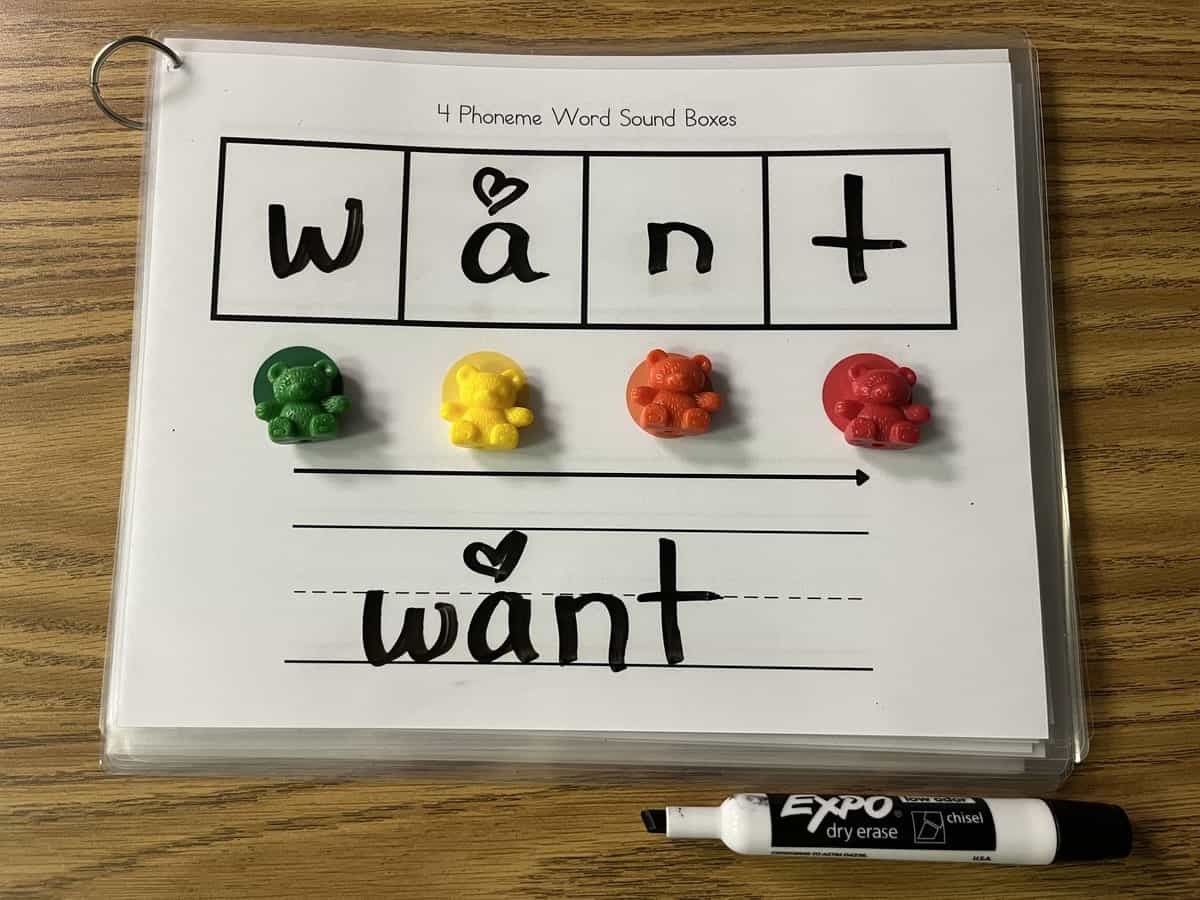
💜 Learn more about irregular or heart words with some great free resources to utilize for teaching.
Why We Love The Poems
Teachers need to provide students with repeated opportunities to learn these high-frequency words. That’s where these poems come in!
Included are 7 poems that include both decodable and irregular words from the Pre-primer List:
- Pet Dogs: can, the, jump, big, run, little*, is*, my*
- Come Jump: I, jump, can, and, up, come*, here*, we*, down*, look*, you*, is*, me*
- I Like: I, it, not, and, in, jump, run, the*, to*, like*, is*
- My Little Pig: in, the, not, big, can, come*, see*, my*, look*, go*, little*
- Come: can, and, red, come*, look*, my*, little*, see*, the*, you*
- Up and Down: up, and, in, run, the*, down*, go,* the*, to*
Note: The words above with an asterisk* mean they should be explicitly taught because there is an irregular sound.
We love using these poems because the text structure does not follow predictable patterns. But they do provide repeated exposure to both decodable and irregular high-frequency words.
🎨 We also love it because after reading, kids have the opportunity to illustrate the poem. Children must reply on the words to create meaning. After that, they have a chance to show off their artistic ability as they draw illustrations that support the meaning.
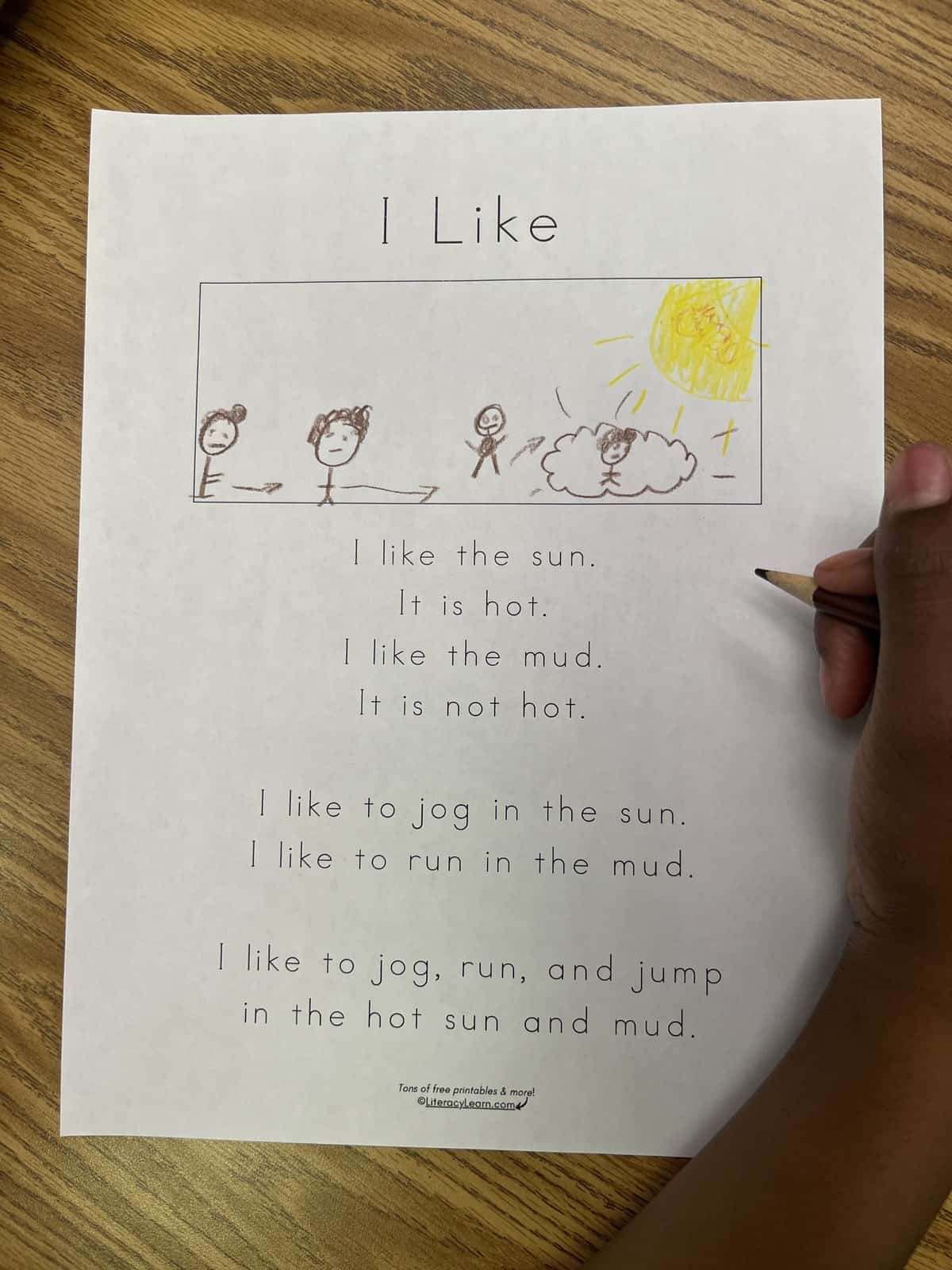
Using the Poems
These poems are most suitable for shared and independent reading in Kindergarten and first-grade classrooms. We recommend this general procedure for introducing, reading, and re-reading these poems.
DAY 1 PROCEDURE
Before Reading
- Read the title. Activate background knowledge and make predictions.
- Locate known words throughout the poem.
- Explicitly teach any irregular word. Use elkonin boxes to map the words and place emphasis on the irregular parts that need to be memorized by heart. Add any irregular words to your sound wall.
- Point out punctuation (periods, quotation marks, question marks, exclamation points).
During Reading
- Using a pointer, read the poem the first time and model decoding as you connect the letters and sounds and blend them together to read. Focus especially on any irregular words you’ve taught.
After Reading
- Incorporate comprehension. Discuss the poems together and ask questions. Depending on the poem, these questions may vary.
Some ideas: Who is the poem about? What is happening in the poem? When we see this punctuation mark, what should we do with our voices?
DAY 2 PROCEDURE
- Locate known words and review the specific high-frequency words. Review irregular words again.
- Read the poem once through to the students.
- Choral read the poem together.
- Review some of the comprehension questions you discussed the day before.
DAY 3 PROCEDURE
- Print individual copies and have students staple or glue them into their notebooks.
- Students read the poem silently to themselves.
- Students can take turns reading the poem with a partner.
- Children have the opportunity to illustrate the story, based on the meaning they derive from the words.
DAY 4 PROCEDURE
- Students whisper the poem 3 times, focusing on reading the words accurately and using effective reading strategies.
Day 5 PROCEDURE
- Students individually whisper read the poem, focusing on accuracy, rate, and expression.
- Complete a Dictated Sentence: You can easily choose one line from the poem to dictate to students. Students repeat the sentence a few times and then write it in their notebooks.
*This will tell you whether students have learned how to spell the high-frequency words with irregular spelling (like ‘my’) and if they’re able to sound out the high frequency words that are decodable (like ‘red’).
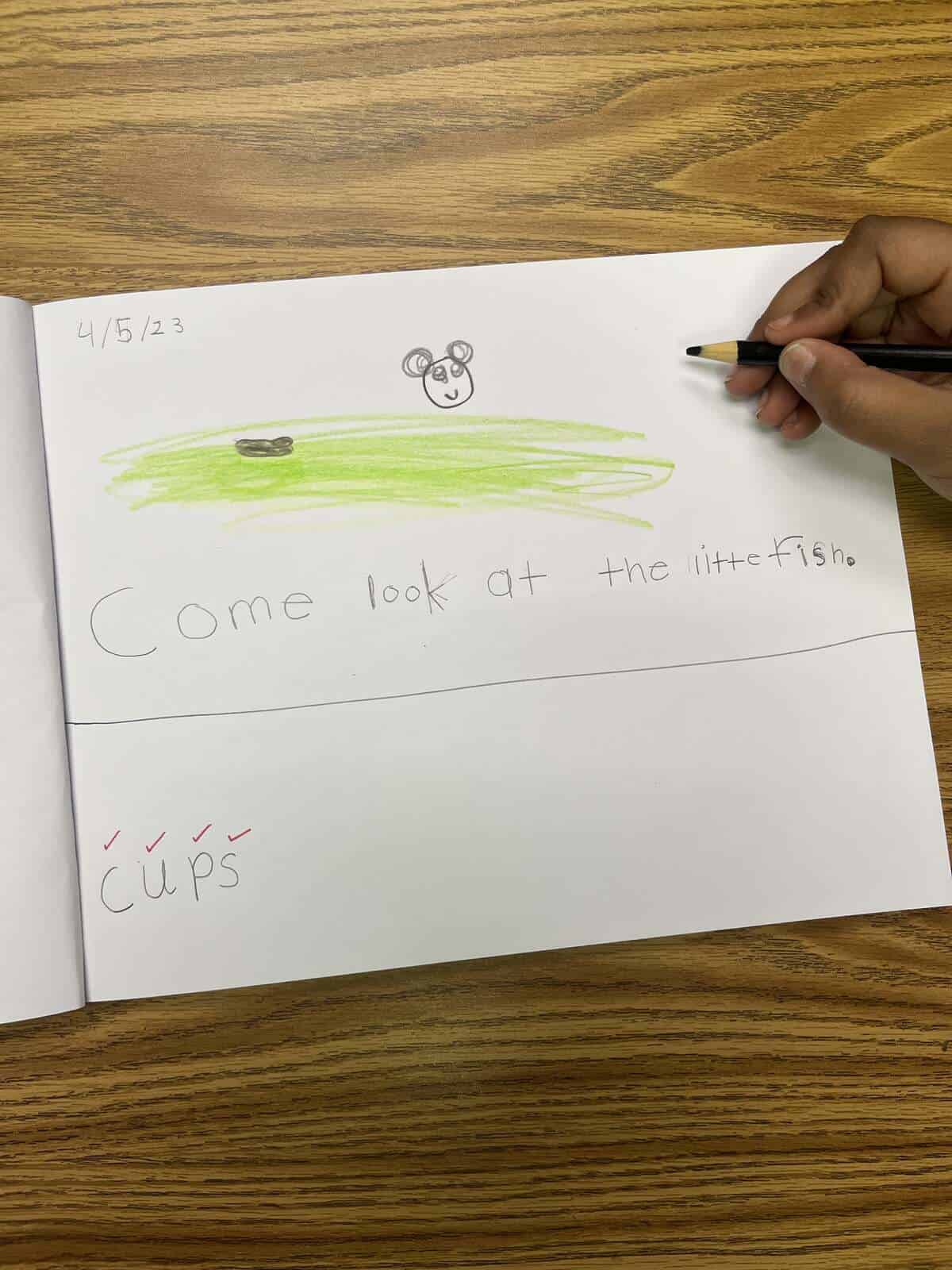
Tips & Info
- Grab our sound box bundle and ultimate word list to help kids with phoneme-grapheme mapping! This is particularly important for teaching words with irregular spelling patterns.
- As you begin introducing these poems and adding them to the student’s notebooks, they begin a collection of sorts. These are great for re-reading and working on fluency, as well as reviewing high frequency words.
- Print some extra copies to send home with the children so they can read the poems to their parents too! One of the best things is that the children’s sense of accomplishment and pride becomes apparent to those listening to them read.
- For more practice, use our FREE Dolch Word Game!
We hope you and your students enjoy these delightful high-frequency word poems. Feel free to email with any questions you have!
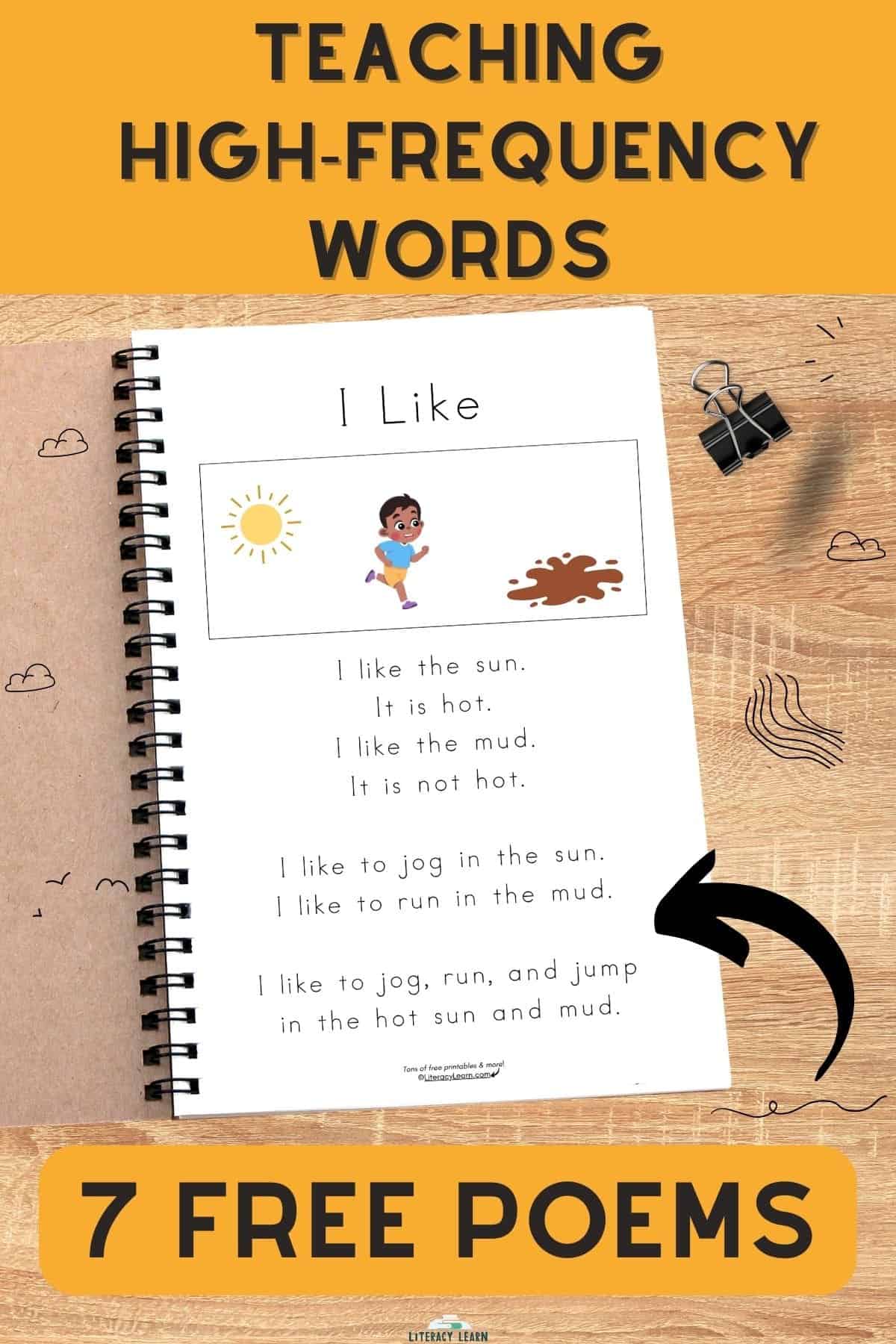
🖨 Download & Print
DOWNLOAD TERMS: All of our resources and printables are designed for personal use only in homes and classrooms. Each teacher must download his or her own copy. You may not: Save our files to a shared drive, reproduce our resources on the web, or make photocopies for anyone besides your own students. To share with others, please use the social share links provided or distribute the link to the blog post so others can download their own copies. Your support in this allows us to keep making free resources for everyone! Please see our Creative Credits page for information about the licensed clipart we use. If you have any questions or concerns regarding our terms, please email us. Thank you!
We’d love to hear about your experience using this resource!
Please leave a comment below or tag us on Instagram @literacylearn!


I want to thank you for the time and effort you have put into enabling me as a Title 1 Reading Teacher to utilize the activities/worksheets. It has also been useful to have the materials readily available to download and use the next day.
Hi Lorraine,
I worked as a Title 1 reading teacher for 7 years, so your comment means a lot. I’m so glad you’ve found the resources to be helpful as you use them with your students!
XO Katie
thank you. It’s a big help for me and my children.
Hi Janet,
We are so happy to hear that our resources are helping you as you teach your children! We hope you keep coming back for more!
Katie and Laura